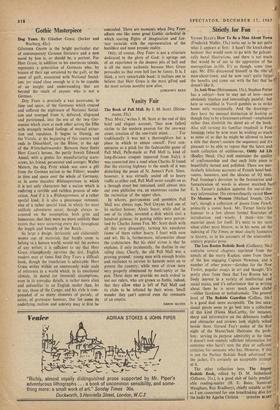Vanity Fair
TALL MALL,' writes J. M. Scott at the end of this brief and elegant account, `[has now fallen] victim to the modern passion for the one-way street, creation of the one-track mind. . . .' For traditionally it was not a thoroughfare but a place in which to amuse oneself. First con- spicuous as a pitch for the fashionable game of Pall Mall, Palle-maile or Pell Mell (a kind of long-distance croquet imported from Italy), it was converted into a road when Charles II found that the existing highway to the south of it was disturbing the peace of St. James's Park. Since, however, it was virtually sealed off to heavy traffic at either end, Pall Mall never caught on as a through street but remained, until almost into our own philistine era, an enormous casino for the recreation of the upper class.
In whores, gastronomes and gamblers Pall Mall was always tops. Nell Gwynn had one of its earliest houses; Alexis Soyer, while chef in one of its clubs, invented a dish which cost a hundred guineas; its gaming tables were patron- ised by Charles James Fox. Mr. Scott deals with all this very pleasantly, turning his anecdotes (some of them rather hoary, I fear) with ease and wit. He is, furthermore, informative about the architecture. But his chief virtue is that he explains, if only incidentally, the decline in our ruling class. Clearly, the old Pall Mall was a proving ground: young men with enough brains and resilience to survive its hazards went on to govern the country; while men of straw were very properly eliminated by bankruptcy or the pox. These days we provide no such ordeal to test our rulers, who are grown so feeble, indeed, that they allow what is left of Pall Mall and its clubs to be infested by their wives. Small wonder they can't control even the remnants of an empire.
SIMON RAVEN






























 Previous page
Previous page